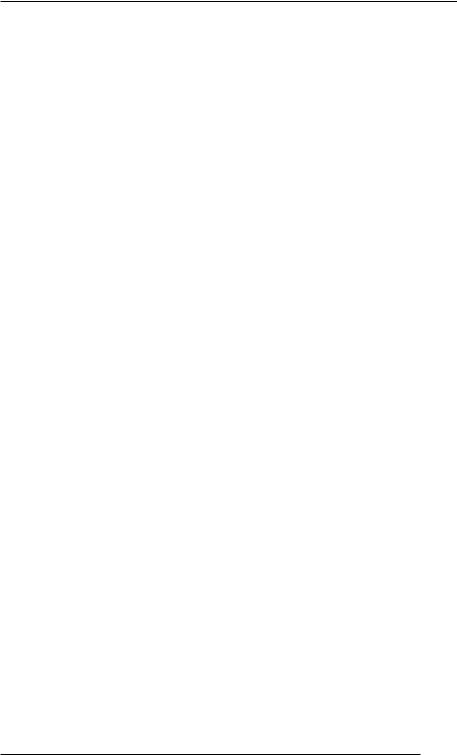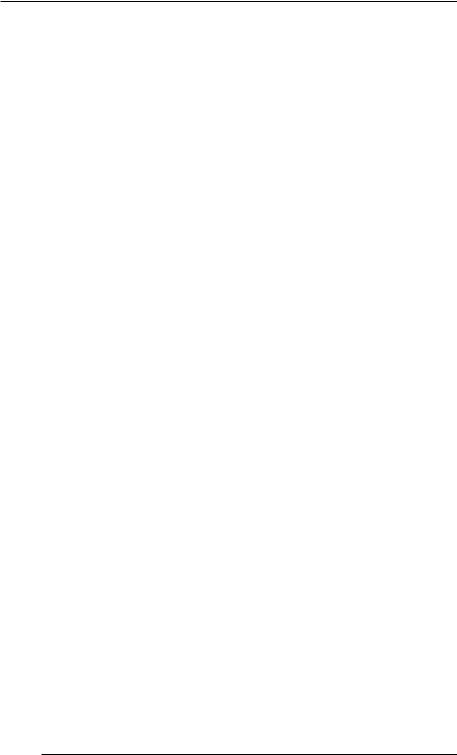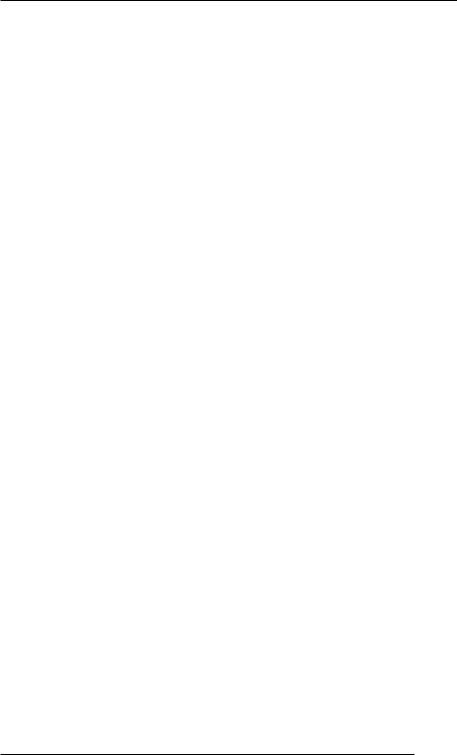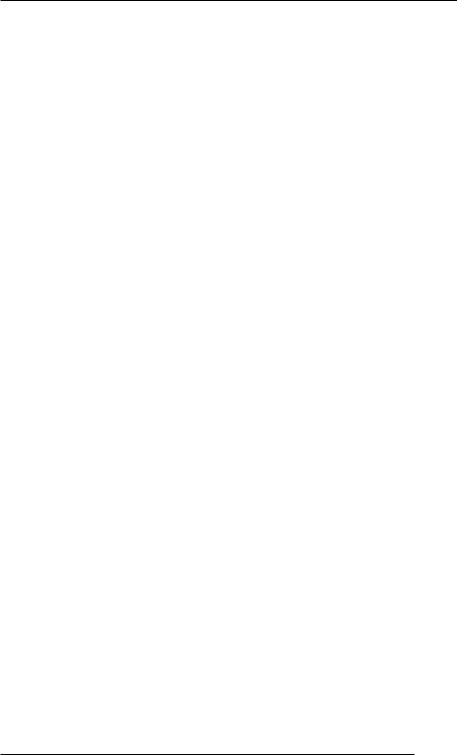
Brown Web of Debt The Shocking Truth about our Money System (3rd ed)
.pdf
Introduction
has the United States itself hopelessly entangled in a web of debt. By 2006, combined personal, corporate and federal debt in the United States had reached a staggering 44 trillion dollars – four times the collective national income, or $147,312 for every man, woman and child in the country.8 The United States is legally bankrupt, defined in the dictionary as being unable to pay one’s debts, being insolvent, or having liabilities in excess of a reasonable market value of assets held. By October 2006, the debt of the U.S. government had hit a breathtaking $8.5 trillion. Local, state and national governments are all so heavily in debt that they have been forced to sell off public assets to satisfy creditors. Crowded schools, crowded roads, and cutbacks in public transportation are eroding the quality of American life. A 2005 report by the American Society of Civil Engineers gave the nation’s infrastructure an overall grade of D, including its roads, bridges, drinking water systems and other public works. “Americans are spending more time stuck in traffic and less time at home with their families,” said the group’s president. “We need to establish a comprehensive, long-term infrastructure plan.”9 We need to but we can’t, because government at every level is broke.
If governments everywhere are in debt, who are they in debt to? The answer is that they are in debt to private banks. The “cruel hoax” is that governments are in debt for money created on a computer screen, money they could have created themselves.
Money in the Land of Oz
The vast power acquired through this sleight of hand by a small clique of men pulling the strings of government behind the scenes evokes images from The Wizard of Oz, a classic American fairytale that has become a rich source of imagery for financial commentators. In a 2002 article titled “Who Controls the Federal Reserve System?”, Victor Thorn wrote:
In essence, money has become nothing more than illusion -- an electronic figure or amount on a computer screen. . . . As time goes on, we have an increasing tendency toward being sucked into this Wizard of Oz vortex of unreality [by] magician-priests that use the illusion of money as their control device.12
Christopher Mark wrote in a series called “The Grand Deception”:
Welcome to the world of the International Banker, who like the famous film, The Wizard of Oz, stands behind the curtain of
6

Web of Debt
orchestrated national and international policymakers and socalled elected leaders.10
The late Murray Rothbard, an economist of the classical Austrian School, wrote:
Money and banking have been made to appear as mysterious and arcane processes that must be guided and operated by a technocratic elite. They are nothing of the sort. In money, even more than the rest of our affairs, we have been tricked by a malignant Wizard of Oz.11
James Galbraith wrote in The New American Prospect:
We are left . . . with the thought that the Federal Reserve Board does not know what it is doing. This is the “Wizard of Oz” theory, in which we pull away the curtains only to find an old man with a wrinkled face, playing with lights and loudspeakers.13
The analogies to The Wizard of Oz work for a reason. According to later commentators, the tale was actually written as a monetary allegory, at a time when the “money question” was a key issue in American politics. In the 1890s, politicians were still hotly debating who should create the nation’s money and what it should consist of. Should it be created by the government, with full accountability to the people? Or should it be created by private banks behind closed doors, for the banks’ own private ends?
William Jennings Bryan, the Populist candidate for President in 1896 and again in 1900, mounted the last serious challenge to the right of private bankers to create the national money supply. According to the commentators, Bryan was represented in Frank Baum’s 1900 book The Wonderful Wizard of Oz by the Cowardly Lion. The Lion finally proved he was the King of Beasts by decapitating a giant spider that was terrorizing everyone in the forest. The giant spider Bryan challenged at the turn of the twentieth century was the Morgan/ Rockefeller banking cartel, which was bent on usurping the power to create money from the people and their representative government.
Before World War I, two opposing systems of political economy competed for dominance in the United States. One operated out of Wall Street, the New York financial district that came to be the symbol of American finance. Its most important address was 23 Wall Street, known as the “House of Morgan.” J. P. Morgan was an agent of powerful British banking interests. The Wizards of Wall Street and the Old World bankers pulling their strings sought to establish a national
7

Introduction
currency that was based on the “gold standard,” one created privately by the financial elite who controlled the gold. The other system dated back to Benjamin Franklin and operated out of Philadelphia, the country’s first capital, where the Constitutional Convention was held and Franklin’s “Society for Political Inquiries” planned the industrialization and public works that would free the new republic from economic slavery to England.14 The Philadelphia faction favored a bank on the model established in provincial Pennsylvania, where a state loan office issued and lent money, collected the interest, and returned it to the provincial government to be used in place of taxes. President Abraham Lincoln returned to the colonial system of government-issued money during the Civil War; but he was assassinated, and the bankers reclaimed control of the money machine. The silent coup of the Wall Street faction culminated with the passage of the Federal Reserve Act in 1913, something they achieved by misleading Bryan and other wary Congressmen into thinking the Federal Reserve was actually federal.
Today the debate over who should create the national money supply is rarely heard, mainly because few people even realize it is an issue. Politicians and economists, along with everybody else, simply assume that money is created by the government, and that the “inflation” everybody complains about is caused by an out-of-control government running the dollar printing presses. The puppeteers working the money machine were more visible in the 1890s than they are today, largely because they had not yet succeeded in buying up the media and cornering public opinion.
Economics is a dry and forbidding subject that has been made intentionally complex by banking interests intent on concealing what is really going on. It is a subject that sorely needs lightening up, with imagery, metaphors, characters and a plot; so before we get into the ponderous details of the modern system of money-based-on-debt, we’ll take an excursion back to a simpler time, when the money issues were more obvious and were still a burning topic of discussion. The plot line for The Wizard of Oz has been traced to the first-ever march on Washington, led by an obscure Ohio businessman who sought to persuade Congress to return to Lincoln’s system of government-issued money in 1894. Besides sparking a century of protest marches and the country’s most famous fairytale, this little-known visionary and the band of unemployed men he led may actually have had the solution to the whole money problem, then and now . . . .
8
Section I
THE YELLOW BRICK ROAD:
FROM GOLD TO
FEDERAL RESERVE NOTES
“Did you bring your broomstick?” “No, I’m afraid I didn’t.”
“Then you’ll have to walk. . . . It’s always best to start at the beginning . . . all you do is follow the Yellow Brick Road.”
-- The Wizard of Oz (1939 film)

Chapter 1 - Lessons from the Wizard of Oz
10

Web of Debt
Chapter 1
LESSONS FROM
THE WIZARD OF OZ
“The great Oz has spoken! Pay no attention to that man behind the curtain! I am the great and powerful Wizard of Oz!”
In refreshing contrast to the impenetrable writings of economists, the classic fairytale The Wizard of Oz has delighted young and old for over a century. It was first published by L. Frank Baum as
The Wonderful Wizard of Oz in 1900. In 1939, it was made into a hit Hollywood movie starring Judy Garland, and later it was made into the popular stage play The Wiz. Few of the millions who have enjoyed this charming tale have suspected that its imagery was drawn from that most obscure and tedious of subjects, banking and finance. Fewer still have suspected that the real-life folk heroes who inspired its plot may actually have had the answer to the financial crisis facing the country today!
The economic allusions in Baum’s tale were first observed in 1964 by a schoolteacher named Henry Littlefield, who called the story “a parable on Populism,” referring to the People’s Party movement challenging the banking monopoly in the late nineteenth century.1 Other analysts later picked up the theme. Economist Hugh Rockoff, writing in the Journal of Political Economy in 1990, called the tale a “monetary allegory.”2 Professor Tim Ziaukas, writing in 1998, stated:
“The Wizard of Oz” . . . was written at a time when American society was consumed by the debate over the “financial question,” that is, the creation and circulation of money. . . . The characters of “The Wizard of Oz” represented those deeply involved in the debate: the Scarecrow as the farmers, the Tin Woodman as the industrial workers, the Lion as silver advocate William Jennings Bryan and Dorothy as the archetypal American girl.3
11

Chapter 1 - Lessons from the Wizard of Oz
The Wizard of Oz has been called “the first truly American fairytale.”4 The Germans established the national fairytale tradition with Grimm’s Fairy Tales, a collection of popular folklore gathered by the Brothers Grimm specifically to reflect German populist traditions and national values.5 Baum’s book did the same thing for the American populist (or people’s) tradition. It was all about people power, manifesting your dreams, finding what you wanted in your own backyard. According to Littlefield, the march of Dorothy and her friends to the Emerald City to petition the Wizard of Oz for help was patterned after the 1894 march from Ohio to Washington of an “Industrial Army” led by Jacob Coxey, urging Congress to return to the system of debt-free government-issued Grenbacks initiated by Abraham Lincoln. The march of Coxey’s Army on Washington began a long tradition of people taking to the streets in peaceful protest when there seemed no other way to voice their appeals. As Lawrence Goodwin, author of The Populist Moment, described the nineteenth century movement to change the money system:
[T]here was once a time in history when people acted. . . .
[F]armers were trapped in debt. They were the most oppressed of Americans, they experimented with cooperative purchasing and marketing, they tried to find their own way out of the strangle hold of debt to merchants, but none of this could work if they couldn’t get capital. So they had to turn to politics, and they had to organize themselves into a party. . . . [T]he populists didn’t just organize a political party, they made a movement. They had picnics and parties and newsletters and classes and courses, and they taught themselves, and they taught each other, and they became a group of people with a sense of purpose, a group of people with courage, a group of people with dignity.6
Like the Populists, Dorothy and her troop discovered that they had the power to solve their own problems and achieve their own dreams. The Scarecrow in search of a brain, the Tin Man in search of a heart, the Lion in search of courage actually had what they wanted all along. When the Wizard’s false magic proved powerless, the Wicked Witch was vanquished by a defenseless young girl and her little dog. When the Wizard disappeared in his hot air balloon, the unlettered Scarecrow took over as leader of Oz.
The Wizard of Oz came to embody the American dream and the American national spirit. In the United States, the land of abundance, all you had to do was to realize your potential and manifest it. That
12

Web of Debt
was one of the tale’s morals, but it also contained a darker one, a message for which its imagery has become a familiar metaphor: that there are invisible puppeteers pulling the strings of the puppets we see on the stage, in a show that is largely illusion.
The March on Washington
That Inspired the March on Oz
The 1890s were plagued by an economic depression that was nearly as severe as the Great Depression of the 1930s. The farmers lived like serfs to the bankers, having mortgaged their farms, their equipment, and sometimes even the seeds they needed for planting. They were charged so much by a railroad cartel for shipping their products to market that they could have more costs and debts than profits. The farmers were as ignorant as the Scarecrow of banking policies; while in the cities, unemployed factory workers were as frozen as the Tin Woodman, from the lack of a free-flowing supply of money to “oil” the wheels of industry. In the early 1890s, unemployment had reached 20 percent. The crime rate soared, families were torn apart, racial tensions boiled. The nation was in chaos. Radical party politics thrived.
In every presidential election between 1872 and 1896, there was a third national party running on a platform of financial reform. Typically organized under the auspices of labor or farmer organizations, these were parties of the people rather than the banks. They included the Populist Party, the Greenback and Greenback Labor Parties, the Labor Reform Party, the Antimonopolist Party, and the Union Labor Party. They advocated expanding the national currency to meet the needs of trade, reform of the banking system, and democratic control of the financial system.7
Money reform advocates today tend to argue that the solution to the country’s financial woes is to return to the “gold standard,” which required that paper money be backed by a certain weight of gold bullion. But to the farmers and laborers who were suffering under its yoke in the 1890s, the gold standard was the problem. They had been there and knew it didn’t work. William Jennings Bryan called the bankers’ private gold-based money a “cross of gold.” There was simply not enough gold available to finance the needs of an expanding economy. The bankers made loans in notes backed by gold and required repayment in notes backed by gold; but the bankers controlled the gold, and its price was subject to manipulation by speculators.
13

Chapter 1 - Lessons from the Wizard of Oz
Gold’s price had increased over the course of the century, while the prices laborers got for their wares had dropped. People short of gold had to borrow from the bankers, who periodically contracted the money supply by calling in loans and raising interest rates. The result was “tight” money – insufficient money to go around. Like in a game of musical chairs, the people who came up short wound up losing their homes to the banks.
The solution of Jacob Coxey and his Industrial Army of destitute unemployed men was to augment the money supply with governmentissued United States Notes. Popularly called “Greenbacks,” these federal dollars were first issued by President Lincoln when he was faced with usurious interest rates in the 1860s. Lincoln had foiled the bankers by making up the budget shortfall with U.S. Notes that did not accrue interest and did not have to be paid back to the banks. The same sort of debt-free paper money had financed a long period of colonial abundance in the eighteenth century, until King George forbade the colonies from issuing their own currency. The money supply had then shrunk, precipitating a depression that led to the American Revolution.
To remedy the tight-money problem that resulted when the Greenbacks were halted after Lincoln’s assassination, Coxey proposed that Congress should increase the money supply with a further $500 million in Greenbacks. This new money would be used to redeem the federal debt and to stimulate the economy by putting the unemployed to work on public projects.8 The bankers countered that allowing the government to issue money would be dangerously inflationary. What they failed to reveal was that their own paper banknotes were themselves highly inflationary, since the same gold was “lent” many times over, effectively counterfeiting it; and when the bankers lent their paper money to the government, the government wound up heavily in debt for something it could have created itself. But those facts were buried in confusing rhetoric, and the bankers’ “gold standard” won the day.
14

Web of Debt
The Silver Slippers: The Populist Solution
to the Money Question
The Greenback Party was later absorbed into the Populist Party, which took up the cause against tight money in the 1890s. Like the Greenbackers, the Populists argued that money should be issued by the government rather than by private banks. William Jennings Bryan, the Populists’ loquacious leader, gave such a stirring speech at the Democratic convention that he won the Democratic nomination for President in 1896. Outgoing President Grover Cleveland was also a Democrat, but he was an agent of J. P. Morgan and the Wall Street banking interests. Cleveland favored money that was issued by the banks, and he backed the bankers’ gold standard. Bryan was opposed to both. He argued in his winning nomination speech:
We say in our platform that we believe that the right to coin money and issue money is a function of government. . . . Those who are opposed to this proposition tell us that the issue of paper money is a function of the bank and that the government ought to go out of the banking business. I stand with Jefferson . . . and tell them, as he did, that the issue of money is a function of the government and that the banks should go out of the governing business.
. . . [W]hen we have restored the money of the Constitution, all other necessary reforms will be possible, and . . . until that is done there is no reform that can be accomplished.
He concluded with these famous lines:
You shall not press down upon the brow of labor this crown of thorns, you shall not crucify mankind upon a cross of gold.9
Since the Greenbackers’ push for government-issued paper money had failed, Bryan and the “Silverites” proposed solving the liquidity problem in another way. The money supply could be supplemented with coins made of silver, a precious metal that was cheaper and more readily available than gold. Silver was considered to be “the money of the Constitution.” The Constitution referred only to the “dollar,” but the dollar was understood to be a reference to the Spanish milled silver dollar coin then in common use. The slogan of the Silverites was “16 to 1”: 16 ounces of silver would be the monetary equivalent of 1 ounce of gold. Ounces is abbreviated oz, hence “Oz.” The Wizard of the Gold Ounce (Oz) in Washington was identified by later commentators as Marcus Hanna, the power behind the Republican Party, who
15
